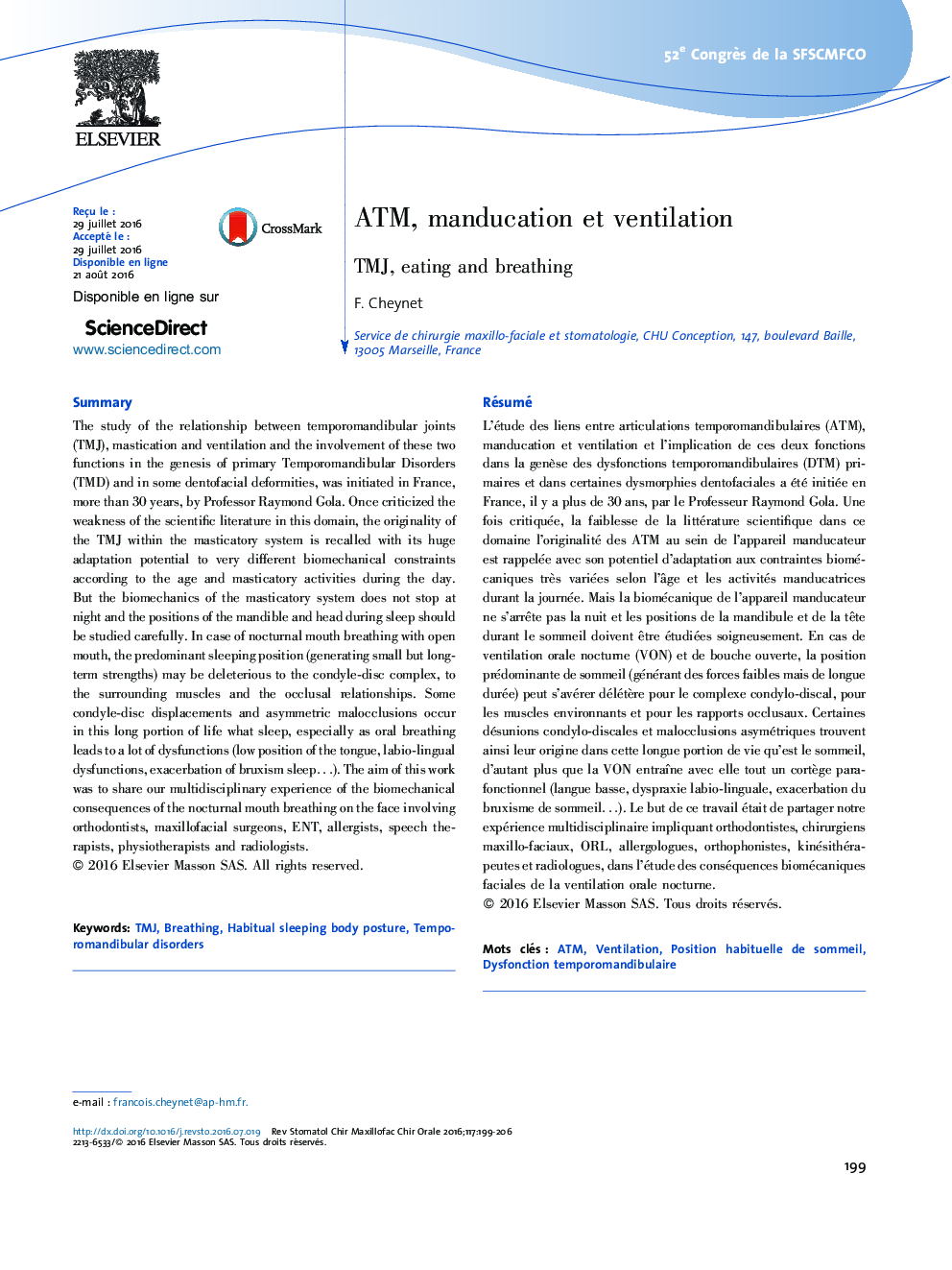| Article ID | Journal | Published Year | Pages | File Type |
|---|---|---|---|---|
| 3174859 | Revue de Stomatologie, de Chirurgie Maxillo-faciale et de Chirurgie Orale | 2016 | 8 Pages |
Abstract
The study of the relationship between temporomandibular joints (TMJ), mastication and ventilation and the involvement of these two functions in the genesis of primary Temporomandibular Disorders (TMD) and in some dentofacial deformities, was initiated in France, more than 30 years, by Professor Raymond Gola. Once criticized the weakness of the scientific literature in this domain, the originality of the TMJ within the masticatory system is recalled with its huge adaptation potential to very different biomechanical constraints according to the age and masticatory activities during the day. But the biomechanics of the masticatory system does not stop at night and the positions of the mandible and head during sleep should be studied carefully. In case of nocturnal mouth breathing with open mouth, the predominant sleeping position (generating small but long-term strengths) may be deleterious to the condyle-disc complex, to the surrounding muscles and the occlusal relationships. Some condyle-disc displacements and asymmetric malocclusions occur in this long portion of life what sleep, especially as oral breathing leads to a lot of dysfunctions (low position of the tongue, labio-lingual dysfunctions, exacerbation of bruxism sleepâ¦). The aim of this work was to share our multidisciplinary experience of the biomechanical consequences of the nocturnal mouth breathing on the face involving orthodontists, maxillofacial surgeons, ENT, allergists, speech therapists, physiotherapists and radiologists.
Related Topics
Health Sciences
Medicine and Dentistry
Dentistry, Oral Surgery and Medicine
Authors
F. Cheynet,
